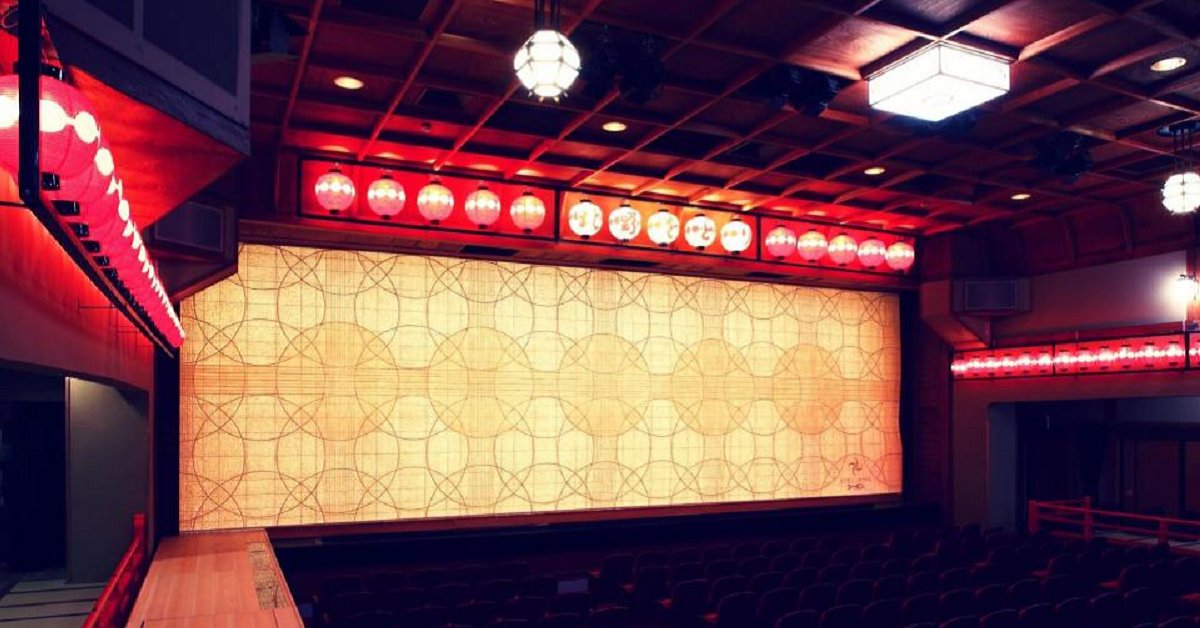The historic Kamishichiken Kaburenjo in Kyoto has long been known as a hub for geiko and maiko culture. Recently, it gained global attention as the filming location for the stage scenes of KOKUHO. This collaboration between cinema and tradition offers audiences a rare chance to witness the depth of Japanese aesthetics.
- What is Kamishichiken Kaburenjo
- KOKUHO and Kamishichiken Kaburenjo
- Cultural Significance of Stage Filming
- Basic Information of Kamishichiken Kaburenjo
- History of Kamishichiken and Hanamachi Culture
- Hanamachi Culture and the Role of the Theater
- Regional and Tourism Impact
- Synergy Between Film and Tourism
- Stage Arts and Film Expression
- Value of the Fusion Between Stage and Film
- Conclusion
What is Kamishichiken Kaburenjo
Kamishichiken is one of Kyoto’s five hanamachi (flower districts), with a history dating back to the Muromachi period. At its heart lies Kamishichiken Kaburenjo, a theater built in the Meiji era. The wooden structure maintains traditional beauty while allowing audiences to experience the geiko and maiko’s art up close.
The stage is known for its depth and soft lighting, which enhance the performers’ movements. From the audience seats, one can see the entire stage clearly, creating a powerful sense of presence. The space itself functions as part of the performance, not merely as a venue.
Daily practices and community events are also held here, making the theater a “living cultural property.”
KOKUHO and Kamishichiken Kaburenjo
The reason Kamishichiken Kaburenjo was chosen as a filming location for KOKUHO is clear: the fusion of historical weight and visual beauty deepens the film’s narrative.
The texture of the wood and the atmosphere of the architecture were vividly captured on screen. Camera angles included not only direct shots of the stage but also perspectives from the audience seats, giving viewers a sense of actually being there.
As a result, the theater has been newly recognized as a “sacred film location,” attracting many visitors who wish to experience the setting firsthand.
Cultural Significance of Stage Filming
Filming stage performances serves as a means to bring traditional performing arts to wider audiences. Even those who cannot visit Kyoto can still feel the maiko’s movements and the atmosphere of the stage through film.
Moreover, filming raises awareness of the need to preserve and restore cultural properties. This is not merely about keeping traditions intact but about creating new forms of cultural succession through contemporary expression.
Basic Information of Kamishichiken Kaburenjo
| Item | Details |
|---|---|
| Location | Kamishichiken, Kamigyo Ward, Kyoto |
| Year of Construction | Meiji period |
| Architectural Style | Wooden structure, close distance between stage and audience |
| Main Uses | Training for geiko and maiko, performances, community events |
| Characteristics | A hub that preserves Japan’s oldest hanamachi culture |
| Connection to Film | Filming location of KOKUHO’s stage scenes |
History of Kamishichiken and Hanamachi Culture
Kamishichiken began in the Muromachi period when tea houses were established near Kitano Tenmangu Shrine. It later developed into a hanamachi where geiko and maiko flourished, and it continues today.
Hanamachi culture is not limited to dance and music but also deeply connected with tea ceremony and wagashi (Japanese sweets). The community as a whole has supported this culture, enabling its survival for centuries.
Hanamachi Culture and the Role of the Theater
| Element of Hanamachi Culture | Role of the Theater |
|---|---|
| Dance | Venue for performances and practice |
| Music (Shamisen, Hayashi) | Live accompaniment for stage performances |
| Tea Ceremony | Cultural background for hospitality |
| Confectionery | Offered to audiences and visitors |
| Seasonal Events | Linked with festivals and community traditions |
Thus, the theater functions not only as a stage but also as the central hub of hanamachi culture.
Regional and Tourism Impact
Becoming a film location has transformed the theater into a new tourism asset.
Visitors drawn by the film also frequent surrounding tea houses and restaurants, strengthening the local economy. Tourism linked with traditional culture is not just consumption; it contributes directly to the preservation of history and the arts.
In addition, the phenomenon of “pilgrimage to sacred film sites” attracts younger generations, helping ensure the continuation of cultural traditions into the future.
Synergy Between Film and Tourism
| Benefits for the Theater | Benefits for the Region |
|---|---|
| Increased recognition | Growth in tourism |
| Greater awareness for preservation | Economic impact |
| New audiences | Re-evaluation of hanamachi culture |
| International exposure | Attraction of foreign tourists |
Stage Arts and Film Expression
Stage performance values the shared moment between performer and audience, while film provides the ability to capture and deliver that moment to anyone, anywhere.
The filming at Kamishichiken Kaburenjo is an excellent example of blending the uniqueness of live performance with the permanence of film.
Value of the Fusion Between Stage and Film
| Feature of Stage | Application in Film |
|---|---|
| Once-in-a-lifetime experience | Preserved permanently on screen |
| Distance between audience and performers | Reproduced from multiple camera angles |
| Lighting and acoustic presence | Enhanced through editing |
| Subtle movements of geiko and maiko | Captured in detailed close-ups |
This fusion serves as a reinterpretation of traditional performing arts in a modern context.
Conclusion
Kamishichiken Kaburenjo is a theater that embodies Kyoto’s oldest hanamachi culture, and through its role in filming KOKUHO, it has gained new value. The union of stage and cinema delivers tradition to wider audiences with great power.
The theater not only preserves culture from the past but also plays a vital role in connecting it to the future. The encounter of film and tradition has created a new model for both tourism and cultural succession.
Going forward, Kamishichiken Kaburenjo will continue to shine as a place where people from around the world can experience the true charm of Japanese culture.






